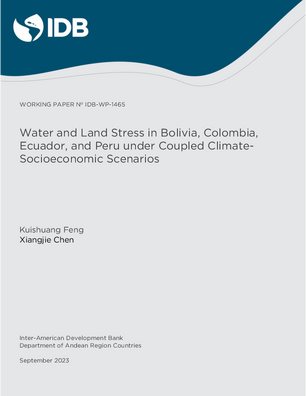Water and Land Stress in Bolivia, Colombia, Ecuador, and Peru under Coupled Climate-Socioeconomic Scenarios
Date
Sep 2023
How to keep water and land stress within planetary boundaries is a major challenge for sustainable development in Latin American countries. Using a global multi-regional input-output analysis (GMRIO) approach, this study simulates the future land and water demand for Peru, Bolivia, Ecuador, and Colombia under three climate-socioeconomic scenarios: SSP1-RCP2.6, SSP2-RCP4.5, and SSP5-RCP8.5. Under all three scenarios, land and water demand in all four countries are projected to increase rapidly in the next few decades. By 2050, the demand for cropland in Peru and Bolivia will exceed their planetary boundaries and the rise in income will be the most significant contributor to the rising demand. In addition, foreign demand will significantly drive the growth of both water and land demand in Ecuador and land demand in Colombia. Non-agricultural sectors (e.g., the mining sector in the latter) will be primarily responsible for the increased water demand in Ecuador and Peru, exacerbating competition between those sectors and the agricultural sector for water. In Peru and Bolivia, there is a significant spatial mismatch of water and land resources at the basin level. With hydraulic infrastructure as a prerequisite, developing irrigated agriculture may lead to a water-land trade-off that will significantly alleviate the land stress in Peru and Bolivia.




